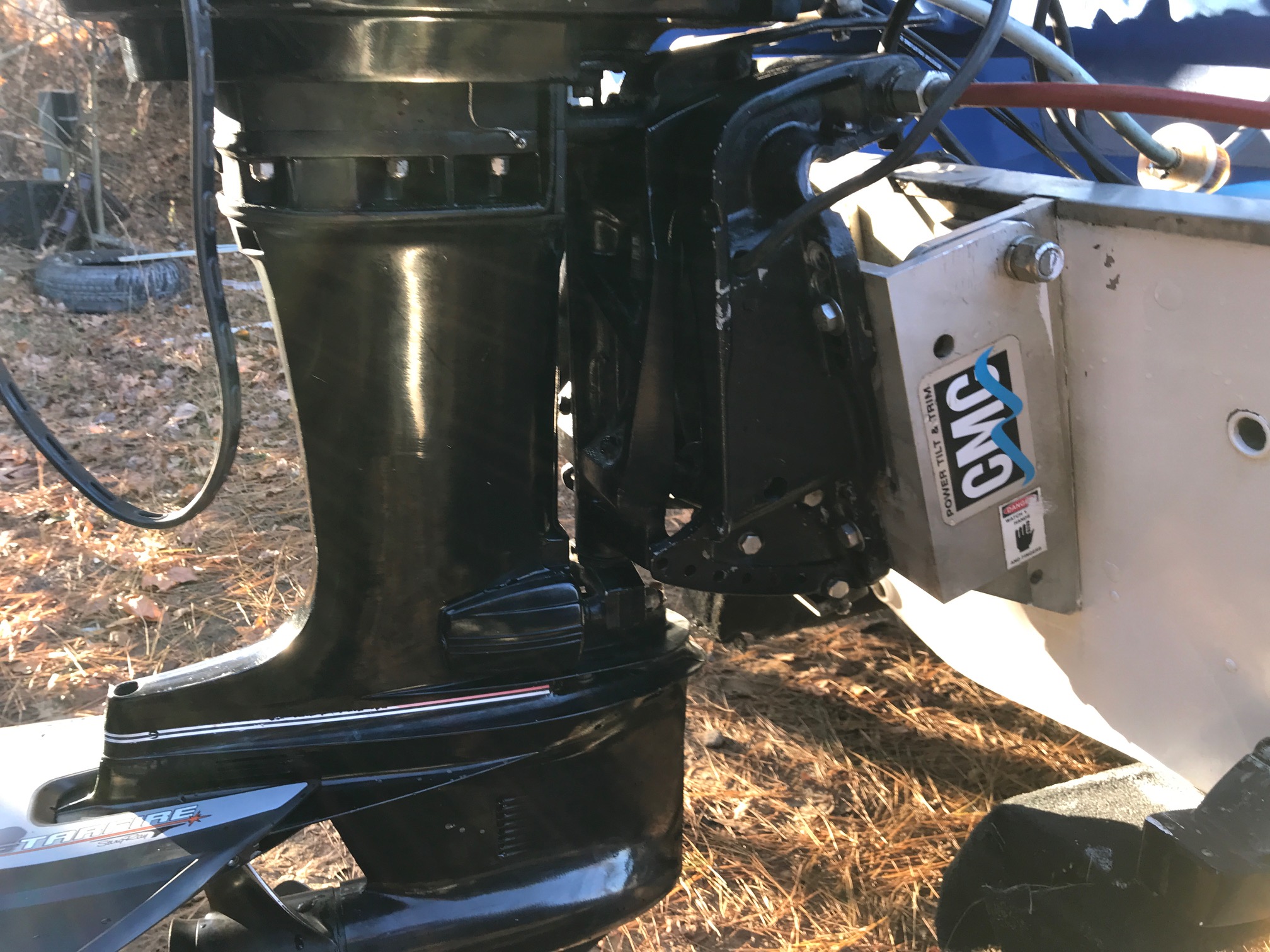djcamera
Member
- Joined
- Aug 30, 2017
- Messages
- 19
- Reaction score
- 0
I recently repowered my 1975 Starcraft 16 SS. I put on the exact same motor as the one that died: a Mercury 75HP made in 1986. Identical in every way, down to the model number.
All the years I had the old motor, I had the feeling that it was mounted too low. I had no problem getting on plane, but I thought the splashing on the corners of the stern was a bit much, and it did feel a bit boggy at lower speeds. I didn't let it bother me and would rather be on the lake than go through the trouble of tinkering with the motor height. But when I hung this new motor a couple of weeks ago, I saw it as an opportunity to raise it one hole. Just one hole, about an inch on the bracket. A straight edge on the cavitation plate goes right to the point of the bottom of the v-hull.
Now I'm back up and running again, but the trim dynamics are dramatically different! Now when I come out of the hole, the bow immediately rises sharply like it never did before, and I start porpoising much sooner if I trim up at the same rate I'm used to...and I never had porpoising issues to speak of. I also have a hydrofoil mounted.
One other thing: the motor is not mounted directly to the transom, it's on a CMC tilt/trim rig that is about six inches wide. I don't use it, but it was on the boat when I got it. See picture attached.
So, questions: did re-positioning the motor ONE HOLE UP change the trim characteristics that significantly, or is something else throwing my trim off, like perhaps the energy provided by a better-performing motor? And should I take into consideration the extra distance from the transom that the CMC tilt/trim gives me, and maybe raise or lower the motor to compensate?

All the years I had the old motor, I had the feeling that it was mounted too low. I had no problem getting on plane, but I thought the splashing on the corners of the stern was a bit much, and it did feel a bit boggy at lower speeds. I didn't let it bother me and would rather be on the lake than go through the trouble of tinkering with the motor height. But when I hung this new motor a couple of weeks ago, I saw it as an opportunity to raise it one hole. Just one hole, about an inch on the bracket. A straight edge on the cavitation plate goes right to the point of the bottom of the v-hull.
Now I'm back up and running again, but the trim dynamics are dramatically different! Now when I come out of the hole, the bow immediately rises sharply like it never did before, and I start porpoising much sooner if I trim up at the same rate I'm used to...and I never had porpoising issues to speak of. I also have a hydrofoil mounted.
One other thing: the motor is not mounted directly to the transom, it's on a CMC tilt/trim rig that is about six inches wide. I don't use it, but it was on the boat when I got it. See picture attached.
So, questions: did re-positioning the motor ONE HOLE UP change the trim characteristics that significantly, or is something else throwing my trim off, like perhaps the energy provided by a better-performing motor? And should I take into consideration the extra distance from the transom that the CMC tilt/trim gives me, and maybe raise or lower the motor to compensate?



